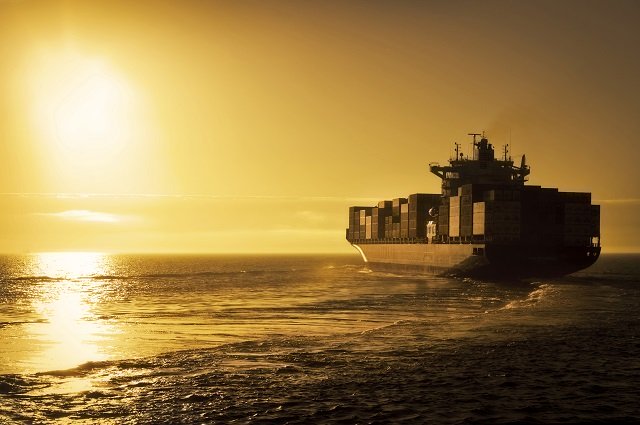
However, a few positive indicators suggest that the economy is likely to turn the corner in the coming months.
The statement at the conclusion of International Monetary Fund (IMF) mission to Pakistan on February 14 highlights that the economy has stabilised, real exchange rate is in line with fundamentals and inflation is expected to begin falling in the next few months.
The SBP-IBA Business Confidence Index returned to the green zone in December 2019 after lagging in the red zone since April 2019. Although economic conditions always entail a certain degree of volatility that dents economic stability, the government must ensure it adopts viable policies. These efforts should include, but not limited to, continuous bolstering of the dollar reserves to reduce currency volatility and avoiding food shortages by relaxing restrictions on the import of essential food items.
This will ensure price stability and help avoid fluctuations that increase the risk of speculation across different markets. The large-scale manufacturing (LSM) index in December 2019 was 9.66% higher than the value reported in December 2018. Major export-based industries including textile, food and beverages, and leather products posted positive growth.
In addition to that, Pakistan Bureau of Statistics (PBS) reported that the first seven months of FY20 showed a decline of 15.6% in imports over the same period of FY19.
However, efforts must be made to boost export growth, which at 2.2% is a cause for concern. The fall of 27.9% in the trade deficit highlights the changing trend on the external front.
The current account deficit, reported by the SBP in calendar year 2019, was $7.4 billion, a 62% reduction from $19.5 billion in 2018.
This change was primarily due to the decrease in import payments for goods of approximately $10.6 billion and import payments for services of $1.15 billion. The balance on trade decreased by $12 billion. This reflects in the fall in the current account deficit. The decrease in imports was a major driver for the increase in gross foreign currency reserves of the SBP, which soared from $9 billion in CY18 to $13.2 billion in CY19, a change of approximately 46%.
Import trend
A closer look at the import trend suggests that imports of all major groups, apart from machinery, decreased in dollar value in the first seven months of FY20 as compared to the same period of previous fiscal year.
Electrical machinery and apparatus and mobile phones were the only major import items that reported a significant increase in the first seven months. Electrical machinery and apparatus imports rose 36.64% while mobile phone imports swelled 79.5%.
The whopping increase in the latter is primarily due to the documentation efforts that has formalised import of mobile phones into Pakistan.
On the other hand, there was a slight decline of 1.67% in the import of power generating machinery. Imports of office machinery, textile machinery and construction and mining machinery declined. The compression of growth is likely a major factor in the reduction of import demand.
Imports of the transport group declined about 45%, with decrease in import of completely knocked down and semi-knocked down units as the major contributing factor. Under the petroleum group, imports of all products decreased except for liquefied petroleum gas (LPG). Interestingly, imports of textile products dropped 18.7%.
However, imports of raw cotton rose 41.5% - a result of poor harvest of the cotton crop reported in 2019. Furthermore, imports of the metal group fell 19.5% but imports of iron and steel scrap increased 6.4%. Lastly, imports of fertilisers decreased 32.3% as local production increased.
Considering the exports, the increase in dollar value was reported for the food group and textile group between July 2019 and January 2020 over the value reported in the same period of previous fiscal year.
Exports of basmati rice increased more than 51.6%, exports of vegetables rose 50.4% and exports of fish and fish preparations went up 16.52%. On the other hand, there was an increase in the export value of finished textile products such as knitwear, bedwear and readymade garments.
Exports of leather manufactures also increased, accompanying the rise in domestic large-scale production, as indicated by the LSM index.
Incentives
In order to provide greater incentives for increasing export activities through more financing options, the SBP has increased the limit on the Long-term Financing Facility (LTFF) available to exporters for machinery purchase and also injected liquidity into both the Export Finance Facility (EFF) and LTFF.
This will help provide concessionary loans to potential exporters at a time when interest rates are relatively high. According to the SBP, foreign direct investment (FDI) into Pakistan increased 65.7%, or $620 million, in the first seven months of FY20.
According to the Board of Investment, most of the FDI went to the IT and telecommunication sector, followed by power and financial business sectors. China has been the most important source of investment, followed by the UK. In recent weeks, the spread of deadly coronavirus is likely to impact trade. Although the full extent of the impact on global production is not known, it can adversely impact trade from Pakistan.
China is by far the largest trading partner of Pakistan and its largest investor. Several of the non-tariff measures focus on good health and wellbeing of individuals.
Sanitary and phyto-sanitary (SPS) requirements for agricultural products are likely to become more restrictive as countries undertake policies to ensure that the import of live animals, plants and their products involves procedures and processes that inhibit the spread of potentially deadly viruses.
Pakistan must harmonise its quality standards with its large trading partners in order to ensure products imported as well as produced domestically do not face trade restrictions. In essence, the government has performed relatively better in reducing the current account deficit. However, significant progress is required for improving the overall economic conditions.
The writer is the Assistant Professor of Economics and Research Fellow at CBER, IBA
Published in The Express Tribune, February 24th, 2020.
Like Business on Facebook, follow @TribuneBiz on Twitter to stay informed and join in the conversation.






1736498386-0/Express-Tribune---News-Desk-(6)1736498386-0-270x192.webp)





1736332856-0/Untitled-design-(20)1736332856-0-270x192.webp)



1736334465-0/sidra--(45)1736334465-0-270x192.webp)






COMMENTS
Comments are moderated and generally will be posted if they are on-topic and not abusive.
For more information, please see our Comments FAQ